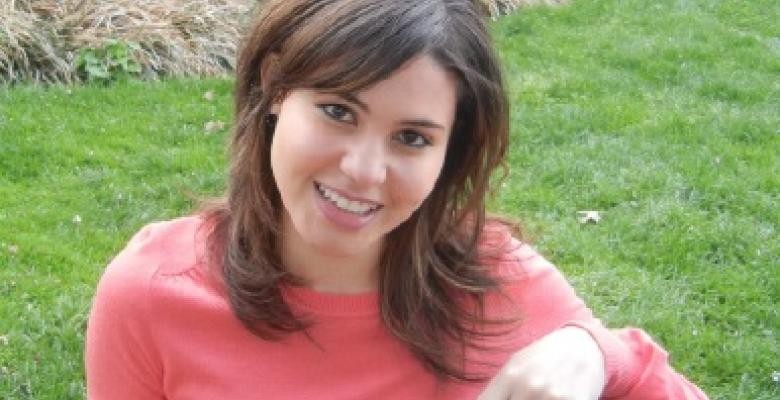New Doctor of Physical Therapy Learned Benefits of Program Long Before Graduation

Nashwa Khalil knew the benefits of physical therapy long before she enrolled in the doctor of physical therapy program at Columbia’s College of Physicians and Surgeons. She began physical therapy as an infant after a birth injury that limited range of motion, strength and mobility in her left arm. The therapy continued through elementary school and she continues to do recommended exercises.
“It hasn’t inhibited me at all in life,” Khalil, 25, says about the condition known as Erb’s palsy, which results from damage to the nerves between the neck and the arm during childbirth. “I sometimes have to learn special ways of doing things but I have never felt I can’t do something.” She gestures animatedly with both hands when she speaks, although she still has some weakness in her left arm and says holding a full coffee cup with only her left hand is a challenge.
She grew up in Queens, N.Y., one of four daughters of Egyptian-born parents who sent the girls to an Islamic school in an effort to preserve their native culture, religion and language, and also took them to Egypt every few years. Visiting family in Cairo when she was 12 or 13 years old, Khalil met a cousin who was about her age with the same birth injury. The cousin, who had not had physical therapy, had much less mobility of her arm and a noticeable disability. “It was a turning point in my life,” Khalil says. “I realized what a difference physical therapy can make, that I was so lucky to be born here and have proactive parents.” She soon became interested in physical therapy as a career.
Columbia’s three-year doctoral program was her first choice after she completed a bachelor’s degree in biology at Stony Brook University on Long Island. “When I came for the interview I felt comfortable right away,” she recalls. “The professors made a mark on me from the first day.” Although the physical examinations and intervention techniques required in her work take some physical strength, Khalil says her professors helped her learn how to compensate for her limitations by using other parts of her body. “They’re all amazing,” she says.
Her first task after receiving her DPT degree on May 22 will be to study for the licensing exam at the end of July. She then hopes to find a job in a hospital setting where she can solidify her knowledge and build on her clinical skills. Her goal is to work with children, focusing on neurological problems such as cerebral palsy, spinal injuries and brain tumors. “Beyond rehabilitation, I want to give them a sense of confidence and self that will allow them to do whatever they want,” she says. Her third and final internship, which ended earlier this month, was working with children in an outpatient clinic at Valley Hospital in Ridgewood, N.J., and she loved it.
“In order to have a great career you have to be passionate about what you do,” she says. “I think I have found my passion.”